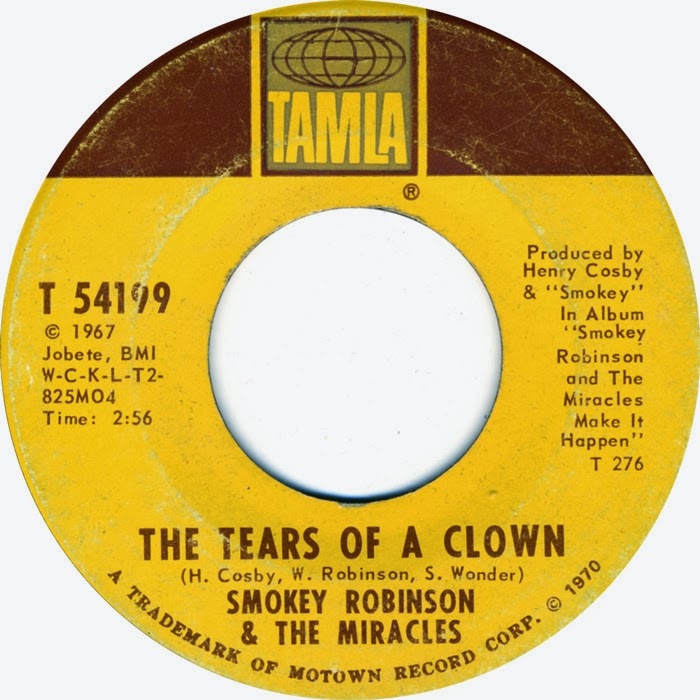That is Motown! The Motown sound!!
Motown was a record company founded in 1959 by Berry Gordy in Detroit USA. Detroit is the capital of the American motorcar industry and "Motown" means "motor town". It was an all-black recording company - I'd be guessing if I said mostly the guys working in the factories, so it's mostly their music, at least at the beginning.
Motown was like a factory too, a factory that followed a simple repetitive process for producing music hits ... a music hits factory. Berry Gordy produced many many hit records.
What was the secret, the secret of the Motown sound? To understand Motown we have to go back to Africa and tribal chanting, we have to go back to the slave trade and working the cotton fields, we have to move on to Christianity and Gospel music, and we have to see how technology was introduced to produce "Rhythm and Blues" (RnB) from Jazz and chant.
Motown is Soul Music made popular. Soul music started off in the 1950s and 60s from Gospel music.
Gospel is from the music sung by black slaves in the cotton fields originally, and in all-black churches. It's a kind of religious chant with African rythms, simple call-and-repeat to engage a congregation of worshippers. The congregation repeats what the vicar said. It is deeply consoling.
Motown is from church Gospel, but also from rhythm and blues. Rhythm and Blues is a black American music from the 40s that mixes Jazz with a kind of rocking beat from the piano. R&B lyrical themes - the ideas being sung about - very often summarise the African-American history and experience of pain from slavery, the denial of freedom and joy, as well as the triumphs and failures in the racism they suffered. It is about oppression, difficult and stressful relationships, hard times materially and financially, and of course their hopes and longings - "I had a dream last night...".
R&B infused into Gospel produced Motown, The Motown Sound. It spoke for the public but also to the public as it was background motivation to people involved in the Civil Rights Movement in the 1960s.
You gotta understand all that to appreciate the fundamental strains in American society dating all the way back to slavery when 13 million Africans made it alive in the slave boats to work in the plantations of the Deep South, and the Civil War that followed when the North tried to impose its idea of an equitable society, so-called.
What is The Motown Sound? I mean, how can you recognise it?
It's all about making the blend of Gospel and Rhythm and Blues - which are black musics - really appeal to a much broader white audience. In other words, it popularises this core black music with a view to more record sales. That was Berry Gordy, out to make money ... and who can blame him? A very clever and original guy.
Here are the main features of Motown - This is how you can recognise the genre:
- tambourines to accent the back beat
- electric bass-guitar (new at the time) for the main melody
- special chord structures - a chord is a collection of notes belonging together in a "key". A chord structure structure is the progression from one chord to the next. This progression sets the emotional tone of the music from happy to sad.
- a call-and-response singing style from Gospel music, the church, from the cotton fields, from Africa.
- So, a simple and repeated progression of chords make the structure, but also sophisticated melodies, the tune that you hear, that first pulls you into the song...then there is the story being told, the lyrics.
- A four-beat drum pattern, nothing simpler - it is the toe-tapping rhythm of the music where certain notes in a chord get emphasised over others.
- Rich horns and strings, the famous "wall of sound" that gives a lush "whoooosh" organ-like reverberating feeling as the sound progresses (This is record-producer Phil Spector's Wall of Sound, which was parallel to Tamla with a lot of cross influence between the two.)
- A trebly style ("treble" is higher notes, "bass" is lower deeper notes). This means mixing sounds electronically (new) in the studio (again, the Wall of Sound) to boost or rebalance the lighter more romantic, girl and boy holding hands, treble.
- A sound with special appeal to a motoring (this is Motown!) public (new) who listened on AM radio (AM is an early technical broadcast method to send sound to your radio).
- Pop (for "popular", ie big audiences) used techniques like sweet orchestral string sections trilling on your hear strings, power-blasting horn sections, carefully arranged background vocals. But nothing hard for ordinary folk to follow - no complicated arrangements, no elaborate, melismatic gliding vocal riffs (one vowel across many notes), and simple story lines rhat put words to our feelings. Motown was simple to follow and simple to understand, undemanding yet a really rich chocolately sound to bathe in - that is why we all love it!









0 comments:
Post a Comment
Keep it clean, keep it lean